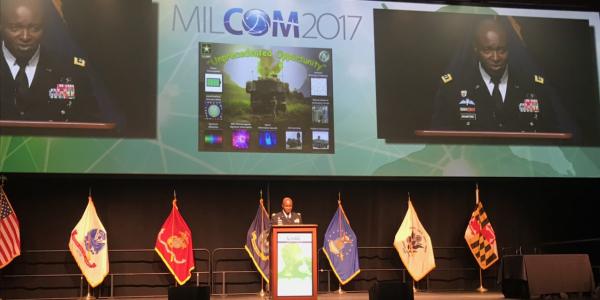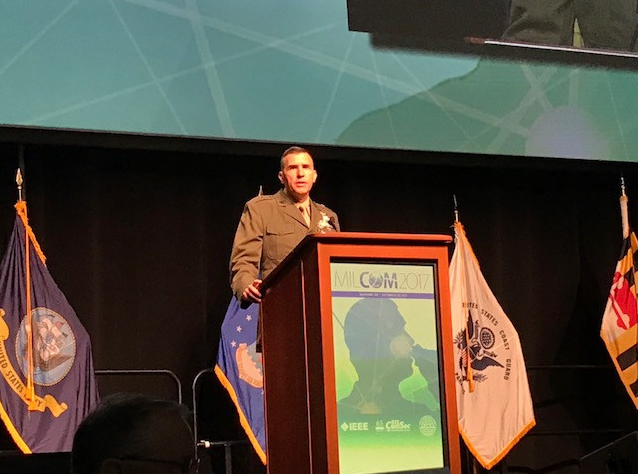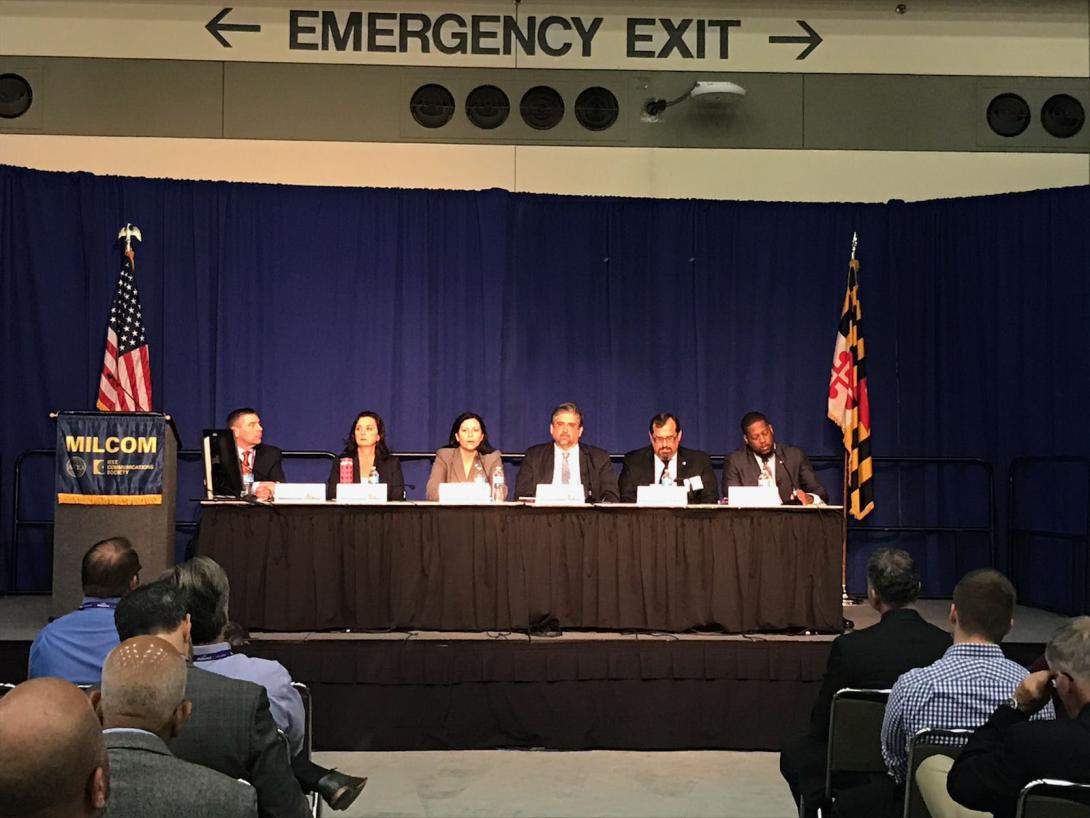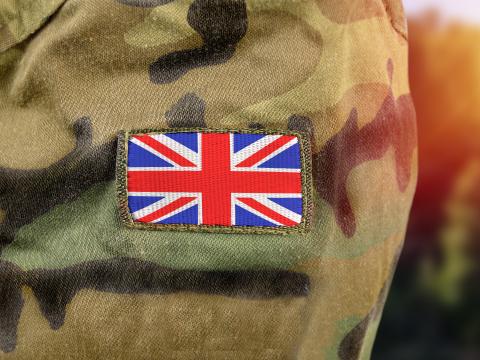Keeping Up With a New Kind of Enemy
The U.S. Department of Defense is seeing the nation’s adversaries use capabilities better than the American military, but change is underway. In particular, the Army recognizes that it must dust off some of its aging procurement processes and leverage commercial technology to regain an advantage over its enemies, said Lt. Gen. Bruce Crawford, USA, the Army’s chief information officer/G-6, at the MILCOM 2017 conference in Baltimore.
“The threat from our adversaries is real,” the general said. “They’ve harnessed unmanned aerial systems that, when combined with lethal fire, they have the ability to decimate. Yet in our current state, we can’t rapidly integrate and acquire new technologies.”
After concluding that its tactical network would not survive adversarial attacks, the Army has embarked on an extensive effort to modernize. “Our network is too fragile, too complex, not scalable and offers limited mobility,” admitted Gen. Crawford at the October conference.
The Army needs easier network configurations, simplified networking capabilities, more resilient satellite communications waveforms, antijam technologies and technologies that reduce electronic signatures, he listed. Tactical voice communications, digital fires and common operating pictures are needed for command and control of maneuver forces.
Partly to address size, weight and power concerns, Gen. Crawford would like to see technologies that have low-power modes or options. In addition, he said the Army is paying close attention to wireless network capabilities for command posts.
The general noted that the Defense Department will have to rely more on industry to show the military the art of the possible with emerging technologies. “It’s a team sport,” he said.
Maj. Gen. Randy Taylor, USA, commanding general, U.S. Army Communications-Electronics Command (CECOM), added that future command, control, communications, computers, intelligence, surveillance and reconnaissance (C4ISR) systems will need to support “much smaller, dispersed mobile Army teams operating in dense urban environments—probably megacities—with hundreds of thousands or millions of people also competing for the same electromagnetic spectrum, water, food and roads.”
CECOM’s spending focus for this fiscal year is readiness. Priorities, in order of importance, are Pacific Command; Central Command; Army Forces Command, and within it, the Global Response Force; and European Command.
Meanwhile, Brig. Gen. Dennis Crall, USMC, director of C4 and chief information officer (CIO) of the Marine Corps, indicated the need for more mobile information technology and better data processing and acquisition methods for Marines. But the U.S. government’s “seemingly habitual” continuing resolution budget status “really does make it hard to do business with the military,” the general said. Regardless, for the past two years, the Marine Corps has been working on its “comply to connect” (C2C) initiative.
C2C checks whether devices plugged into a network have software patches and automatically updates configuration settings. The system includes software to see other networks, network access controls and installation processing nodes to modernize Marine Corps data centers and reduce the number of core data centers.
Another important focus for the Marine Corps is mobility. “We need to take our network and data with us,” Gen. Crall said. Therefore, modernized equipment must deliver reduced size, weight and power. When combined with important wireless capabilities, mobility will allow the Marines to operate successfully at the tactical edge, the general concluded.
Amid a data explosion, the Marine Corps also needs to find ways to store and effectively use information. “To the age-old question of ‘Where is your data—behind you, with you or in front of you, the answer really is ‘Yes,’” he said. “Data needs to be everywhere because we are going to be operating in a contested environment, and we are not prepared right now to fight in that environment.”
Terry Halvorsen, CIO and an executive vice president at Samsung Electronics, echoed this sentiment, saying data is a currency driving the economy. “It is the world’s platinum,” said the former Defense Department CIO.
Data needs to travel with users, he continued. Certain bits of information are needed “when they’re needed,” and the key is being able to access the right data at the right time to make informed decisions. “And we want convenience,” Halvorsen said.
Barbara Hoffman, principal director for the Defense Department’s Deputy CIO for Information Enterprise (DCIO-IE), noted that departmental data is in silos and in a legacy infrastructure. The department is slowly improving data management and information technology, starting by moving systems to the cloud more quickly. Hoffman also observed that the new generation of soldiers comes to the military with a great deal of knowledge about mobile devices and has expectations about using them that the department is not quite meeting.
The same tools and applications on mobile devices that soldiers find important are also making the devices vulnerable, warned Kiersten Todt, president and managing partner of Liberty Group Ventures, a risk management firm. Mobile devices used to be peripheral accessories, but now they are necessities. The microphone, the camera, the data going through the phone and the applications are all points of attack, she said.
The bottom line is that Defense Department data management always needs to tie back to the mission and the warfighter, especially in the face of credible and growing cyberthreats, said Essye Miller, deputy CIO for cybersecurity. Miller portended that the Defense Department will need to shift the focus of data management from compliance to risk assessment. The department must identify specific, high-value, sensitive information assets that need protection. “We need to look at it more holistically than we have,” she advised.
For additional coverage, including videos, photos and presentations, see event.afcea.org/MILCOM17Archive.







Comments